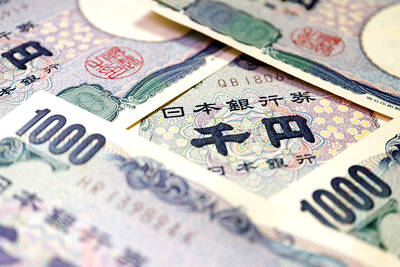The nation’s largest associations of intellectual property rights owners and advertising agencies yesterday inked a memorandum of understanding (MOU) on the Infringing Website List (IWL) in a bid to protect the intellectual property rights of the nation’s content providers.
The list is a measure adopted by the US, the UK and Hong Kong to block the advertising revenues of piracy sites based on a list of illegal Web sites.
“We believe that the IWL can effectively threaten piracy sites, as advertising is the main revenue contributor for them,” Intellectual Property Office Director-General Sherry Hong (洪淑敏), who oversaw the MOU signing ceremony, told a news conference.
The UK’s IWL program in February reduced the number of digital ads on illegal Web sites by 64 percent from a year earlier, Hong said, citing data from the London Police’s Intellectual Property Crime Unit.
The Taiwan Intellectual Property Alliance, which represents industry associations of record companies, animation studios, publishers, film studios and software developers, would update the IWL and notify the Taipei Association of Advertising Agencies on a monthly basis, alliance representative Robin Lee (李瑞斌) said.
The association would pass the list on to more than 140 domestic and international advertising agencies, suggesting they do not to place ads on the specified sites, association chairman Evan Teng (鄧博文) said.
Deng said the association received the first list that specified 10 Web sites from the alliance last month and transferred it to its members, which control a combined online and offline advertising budget of nearly NT$12 billion (US$399 million) per year.
Hong said Google, which is not an association member, expressed its support for the program and said that it is willing to receive the list as a reference.
The Internet protocol (IP) addresses of piracy sites are mainly located in China and the US, Hong said, adding that the office has been in contact with Chinese authorities over piracy issues in accordance with the Cross-Strait Agreement on Intellectual Property Right Protection and Cooperation.
The office in February signed an intellectual property enforcement MOU with the US and offered Taiwan’s IWL to the nation last month, and is waiting for US authorities to take action against the illegal Web sites, Hong said.
The most popular piracy site in Taiwan for illegally downloading movies is Eyny.com (伊莉討論區), whose IP address routes to the US, Hong said, citing information from the Motion Picture Association of America.

AI TALENT: No financial details were released about the deal, in which top Groq executives, including its CEO, would join Nvidia to help advance the technology Nvidia Corp has agreed to a licensing deal with artificial intelligence (AI) start-up Groq, furthering its investments in companies connected to the AI boom and gaining the right to add a new type of technology to its products. The world’s largest publicly traded company has paid for the right to use Groq’s technology and is to integrate its chip design into future products. Some of the start-up’s executives are leaving to join Nvidia to help with that effort, the companies said. Groq would continue as an independent company with a new chief executive, it said on Wednesday in a post on its Web

RESPONSE: The Japanese Ministry of Finance might have to intervene in the currency markets should the yen keep weakening toward the 160 level against the US dollar Japan’s chief currency official yesterday sent a warning on recent foreign exchange moves, after the yen weakened against the US dollar following Friday last week’s Bank of Japan (BOJ) decision. “We’re seeing one-directional, sudden moves especially after last week’s monetary policy meeting, so I’m deeply concerned,” Japanese Vice Finance Minister for International Affairs Atsushi Mimura told reporters. “We’d like to take appropriate responses against excessive moves.” The central bank on Friday raised its benchmark interest rate to the highest in 30 years, but Bank of Japan Governor Kazuo Ueda chose to keep his options open rather than bolster the yen,

Global server shipments are expected to surge to 15 million units next year, from 4 million units this year, with artificial intelligence (AI) servers accounting for about 30 percent, driven by massive capital spending by major cloud service providers, the Market Intelligence and Consulting Institute (MIC) said on Thursday last week. Major cloud service providers — including Google’s parent company Alphabet Inc, Microsoft Corp, Amazon.com Inc and Meta Platforms Inc — are projected to budget US$450 million for capital expenditure next year, up from US$400 million this year, MIC ICT [information and communications technology] Industry Research Center director Edward Lin

Even as the US is embarked on a bitter rivalry with China over the deployment of artificial intelligence (AI), Chinese technology is quietly making inroads into the US market. Despite considerable geopolitical tensions, Chinese open-source AI models are winning over a growing number of programmers and companies in the US. These are different from the closed generative AI models that have become household names — ChatGPT-maker OpenAI or Google’s Gemini — whose inner workings are fiercely protected. In contrast, “open” models offered by many Chinese rivals, from Alibaba (阿里巴巴) to DeepSeek (深度求索), allow programmers to customize parts of the software to suit their